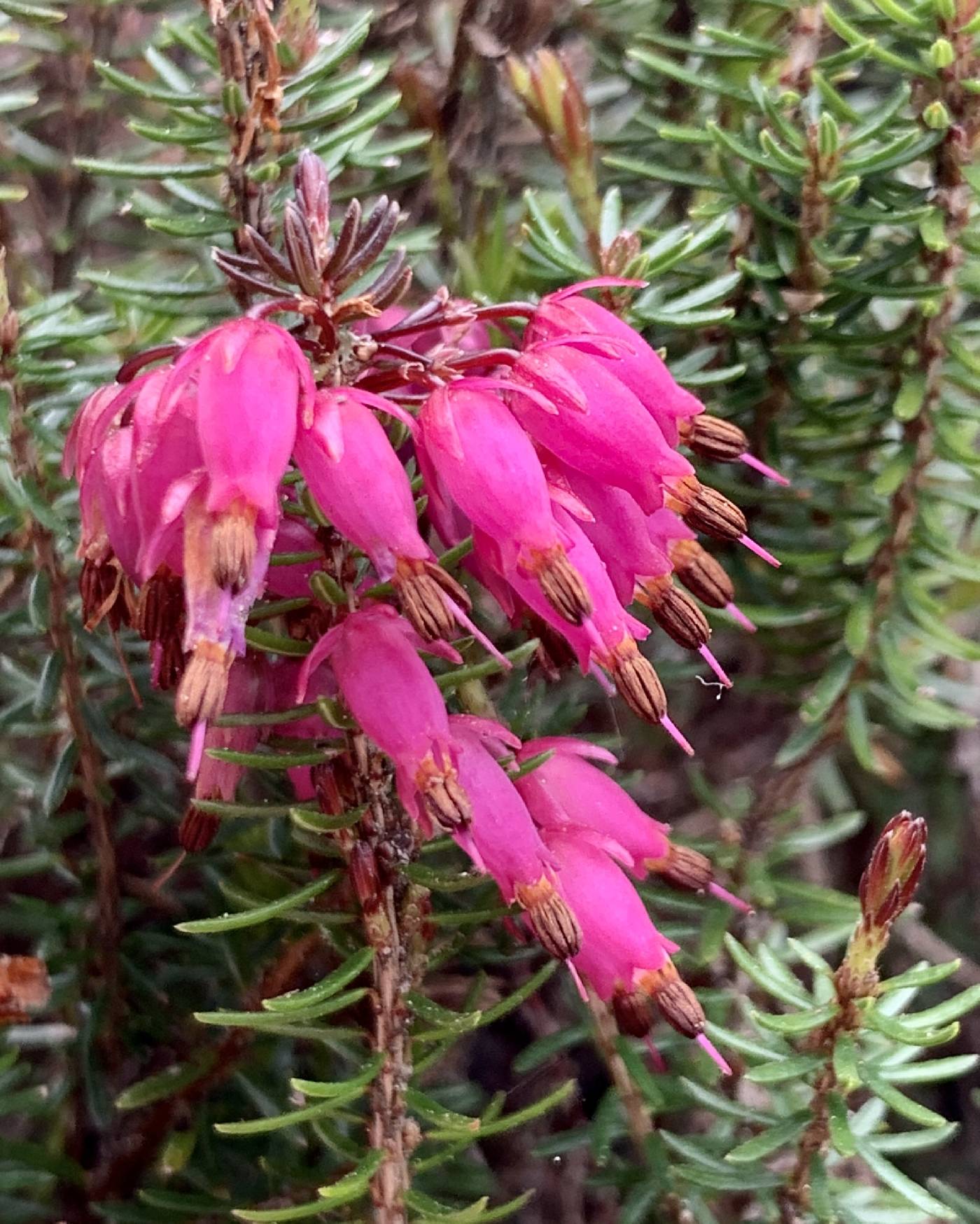
|
Family: Ericaceae |
Subshrubs or shrubs [trees]. Stems erect, spreading, or creeping, (much-branched); twigs glabrous or hairy. Leaves persistent, whorled; petiole present; blade coriaceous, margins ciliate, prickled, or glabrous. Inflorescences terminal or axillary, umbels, racemes, or panicles, 10-30-flowered; perulae absent; (bracteoles 2-3). Flowers bisexual, radially symmetric; sepals 4-5, distinct, (shorter than petals); petals 4-5, connate nearly their entire lengths [connate ca. 1/2 their lengths], corolla persistent, campanulate; stamens 10, included or exserted; (filaments glabrous); anthers with or without awns, dehiscent through narrowly oblong, subterminal pores; ovary pseudo-10-locular; style (slender, straight), included or exserted, (glabrous); stigma filiform, obconic, or capitate. Fruits capsular [drupaceous], ellipsoid, dehiscence loculicidal [indehiscent]. Seeds ca. 10, ellipsoid to obovoid, not winged, not tailed; testa reticulate or foveolate. x = 12. All of the naturalized species of Erica, as well as some others and hybrids, are cultivated, especially in the northeastern and northwestern coastal areas (D. Metheny 1991). Most require acid soils, although E. carnea, E. vagans, and E. ×darleyensis (E. carnea × E. erigena) will accept neutral soils (A. Mikolajski 1997). Over 700 species are endemic to the Cape region of southern Africa; recent molecular phylogenetic studies suggest that the genus originated in Europe, and that the southern African species represent radiation from an ancestor of E. arborea (A. F. McGuire and K. A. Kron 2005).
Fls 4-merous; sep distinct; cor ovoid to campanulate, shallowly lobed; stamens 8; anthers with or without appendages; capsule subglobose, enclosed by the persistent cor; branching shrubs with narrow, whorled, subsessile lvs and pink to purple fls. 600+, Old World. Our spp. all intr. from Europe. Gleason, Henry A. & Cronquist, Arthur J. 1991. Manual of vascular plants of northeastern United States and adjacent Canada. lxxv + 910 pp. ©The New York Botanical Garden. All rights reserved. Used by permission. |
This project was made possible in part by the Institute of Museum and Library Services [MG-70-19-0057-19].
Powered by Symbiota



